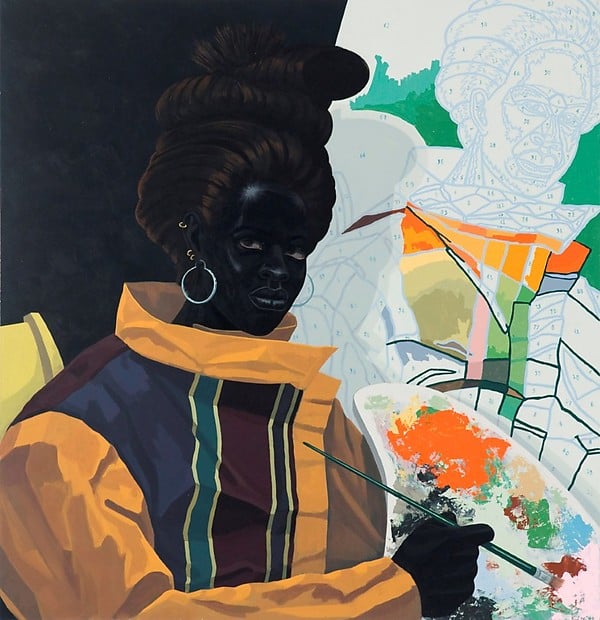 “Untitled (Painter),” 2009. A selection from Mastry, which was recently on view at The Metropolitan Museum of Art.
By Kerry James Marshall
“Untitled (Painter),” 2009. A selection from Mastry, which was recently on view at The Metropolitan Museum of Art.
By Kerry James Marshall
At the end of January, about a week after the country officially turned the page and stepped into its next chapter, I found myself on the Upper East Side. I was looking for inspiration. I was in need of a scene. And because a day-long creative convening was being held at The Metropolitan Museum of Art to commemorate the conclusion of Kerry James Marshall’s Mastry exhibition — a beyond staggering career retrospective that reorients black bodies and stories into American history with the kind of grace seldom seen in hallowed white spaces — I found myself in a juncture of Manhattan I rarely journey to.
For a time now, I have looked to art — in particular, visual art that centers, challenges, and envisions the spectrum of blackness — to better help me understand what, last year, Solange sweetly styled “the ways of the world.” Under Barack Obama, this search seemed especially important, if for no other reason than to further celebrate the plurality I long knew was there, one that had always been there, though the larger world refused this truth. Under Donald Trump, my motivations shifted: I was now on the hunt for context, community, and healing.
Below, five creatives from diverse disciplines — photography, mixed-media, performance, etc — discuss the role art, specifically black art, plays in the present moment, and how it can heal, mobilize, and provide more nuanced context as we push forward.
Rashida Bumbray, choreographer, curator, and performance artist
“Our teachers, black women and black queer men, emphasize the importance of repetition in our efforts in the goal of dancing full out. And we understood that this full out was not just a physical state, but a spiritual state where we could access a heightened experience, reserved for those who have been given access to this transfer of knowledge. Access to a spiritual and psychic technology; technologies so ancient they seem new, like the ring shout, like tap dance. Technologies which the poet Kamau Braithwate has called ‘magical realism.’ African people developed [these technologies] in the new world as an alternative to insanity. And these forms acted as a pathway to levity and freedom. As we navigate the terrifying context of our political reality, we desperately need to tap into these technologies. We can preserve and make these technologies accessible by tapping into the rich continuum of our ancestors — forms that were developed by our ancestors. They developed these forms in times not unlike what may be ahead of us with this current administration. When I think about the kinds of injustices that are rearing their heads, it’s hard for me not to think that the alt-right is also tapping into and invoking an ancestral lineage of white supremacy. Like with Tamir Rice, Trayvon Martin, and my brother’s best friend Trip — who was killed as a teenager — I think about the moral obligation not only to show black suffering, but the moral obligation to tend to black healing.”
Naima Green, photographer
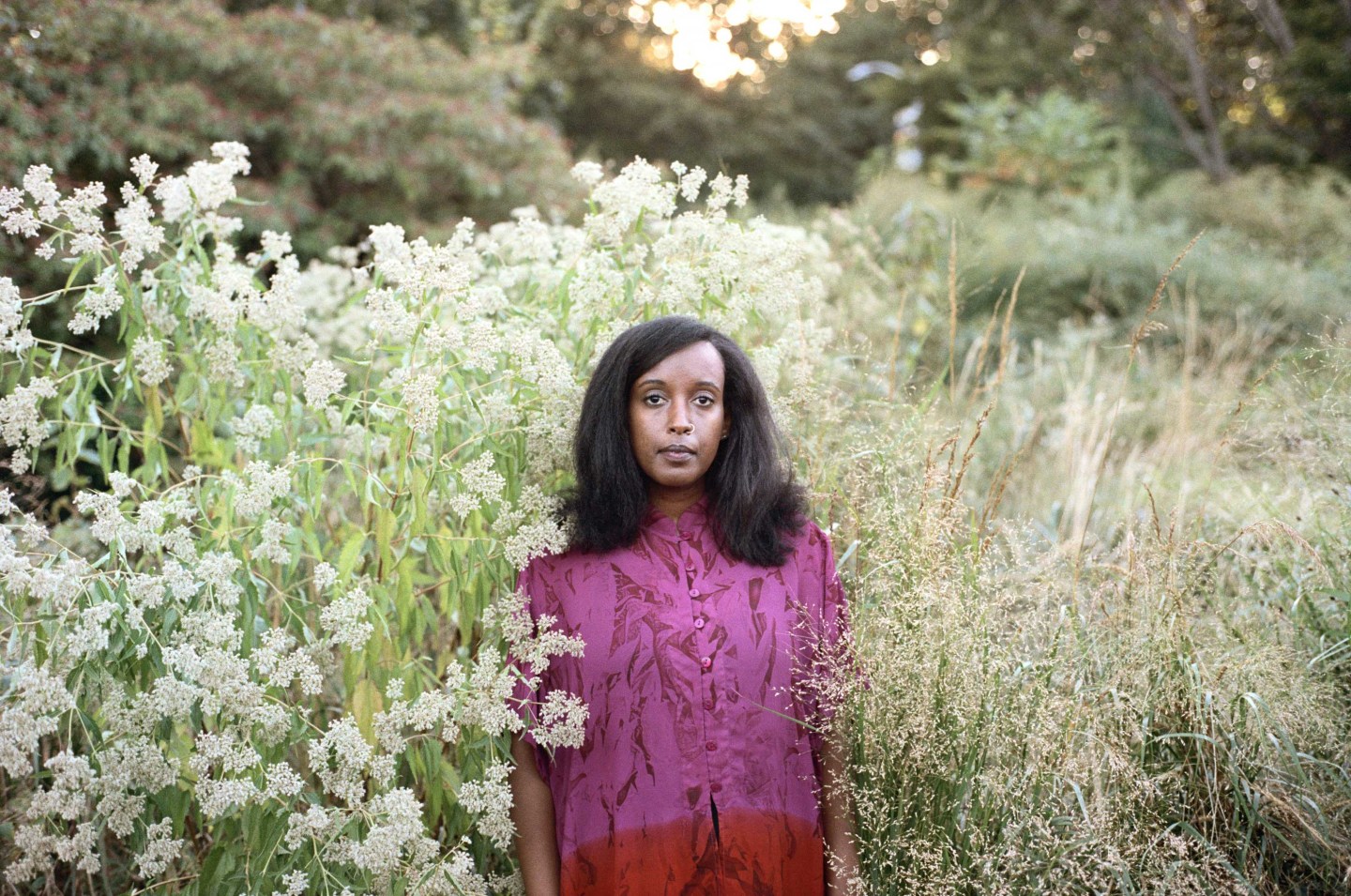 “Salome, Brooklyn Botanical Garden” 2015.
Photo by Naima Green
“Salome, Brooklyn Botanical Garden” 2015.
Photo by Naima Green
“During times of political and social unrest I think our position as documentarians, storytellers, and archivists is amplified. In my most comprehensive body of work, Jewels from the Hinterland, I document our presences in lush, green spaces within New York City, rejecting singular representations of black people in cities. I seek to complicate narratives around blackness, queerness, and physical spaces. The thread within my work is investigating nuance, making space for quiet and the inner life of people — work that adds to our emerging historical narrative, work that investigates nuance, and work that listens and responds. I also see my role as a source of joy, especially when it’s hard to listen to the news or be in certain places. The artist’s role is to facilitate safe spaces for care and fun. We get lost in artworks as a point of escape. I hope that I can create a place to wander when people need it most; to provide an alternative. I have to actively remind myself that if I’m making work that holds weight for me, others may be able to connect to some piece of it as well.”
Imani Uzuri, musician and composer
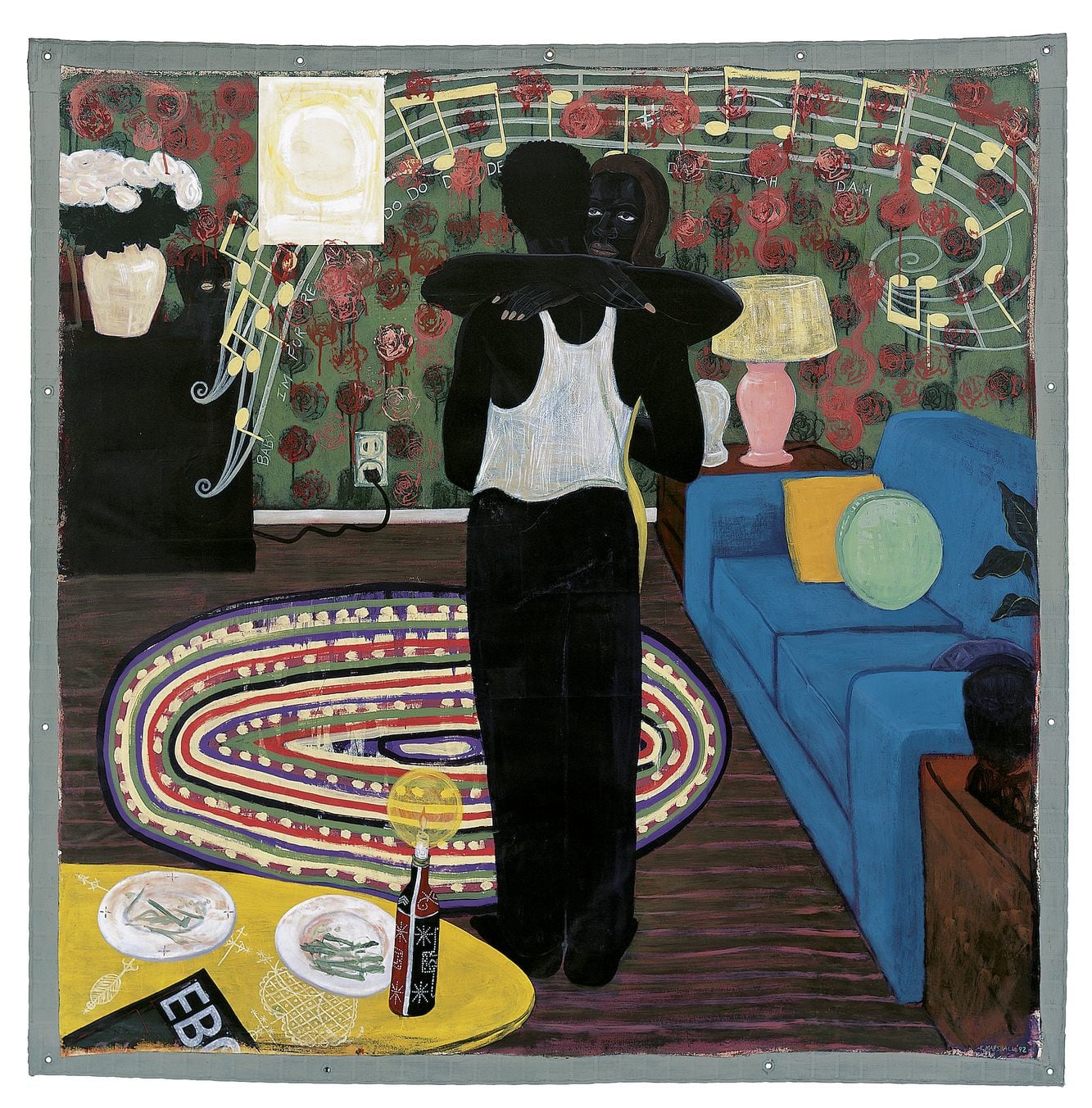 “Slow Dance,” 1992-93.
By Kerry James Marshall
“Slow Dance,” 1992-93.
By Kerry James Marshall
“When I first saw [Kerry James’s Marshall’s “Slow Dance”] I immediately thought of the Charles Burnett scene from Killer of Sheep, when Stan is dancing with his wife — the nakedness, the intimacy, and how this space was a sanctuary for them despite what was happening in the world. Another thing I noticed, as a singer and composer, were the musical notes in the painting. It let me know that they were dancing to sound and that, for Mr. Marshall, the sonics are important to intimacy and vulnerability. Along the notes, you’ll see the words, ‘Baby, I’m for real,’ which is referencing The Originals song from 1969. The idea of ‘Baby, I’m for real’ really struck me. I was thinking: what does it mean to surrender yourself? It’s about the work of vulnerability, the work of intimacy, the work or allowing yourself to be naked and seen.”
Martine Syms, conceptual artist
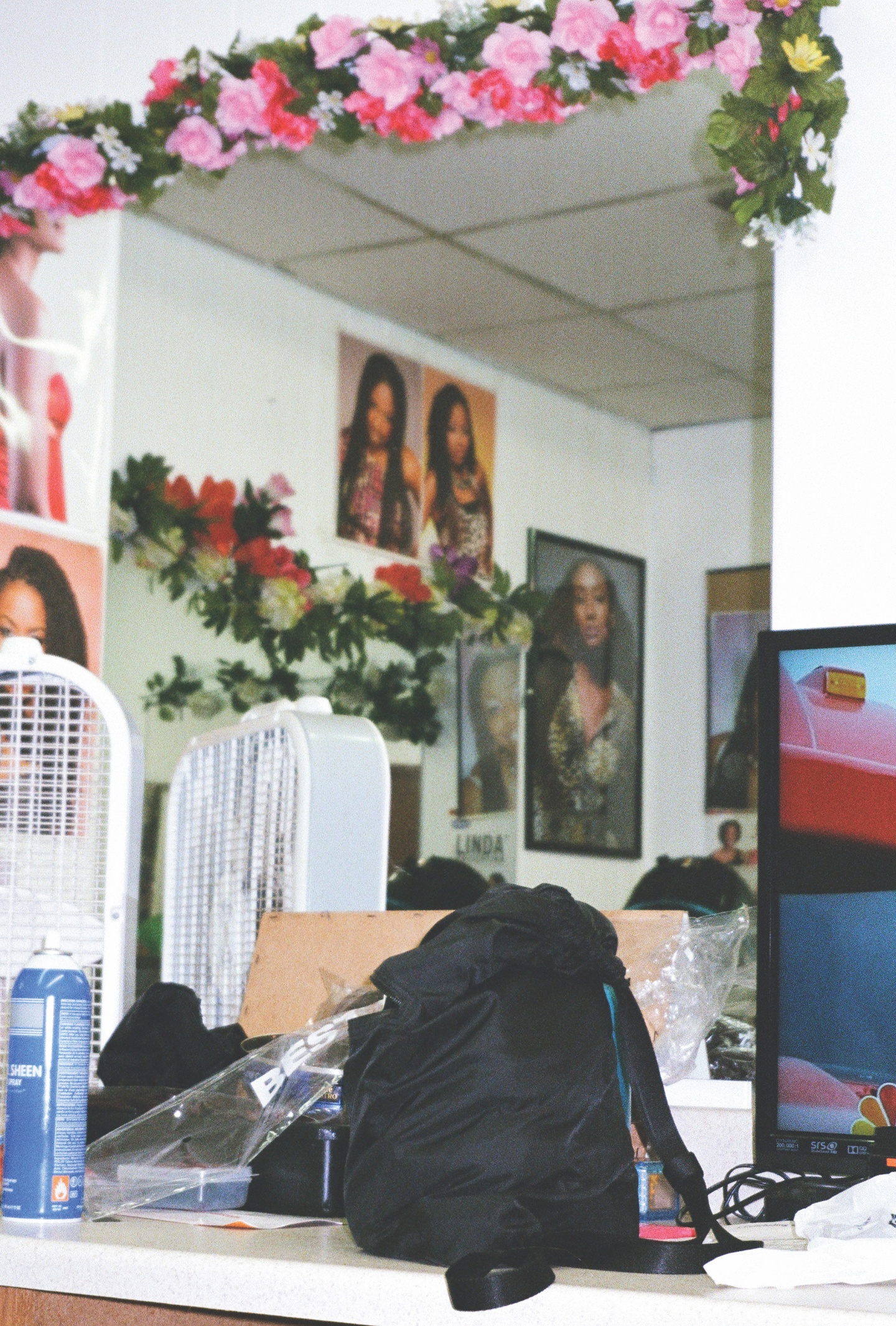 “One Sheet,” 2017.
By Martine Syms
“One Sheet,” 2017.
By Martine Syms
“For me, my work is how I think through ideas. It’s a way of processing my experiences and research. It starts with trying to make marks towards an idea. I am trying to figure out what I know and what I’d like to know. I once heard Paul Chan say art’s role was to make sense of nonsense. Another time Samuel R. Delany said it was there to change discourse, which in turn changed culture. The artist can imagine a different world. Right now I’m looking for my people.”
Kameelah Janan Rasheed, mixed-media artist
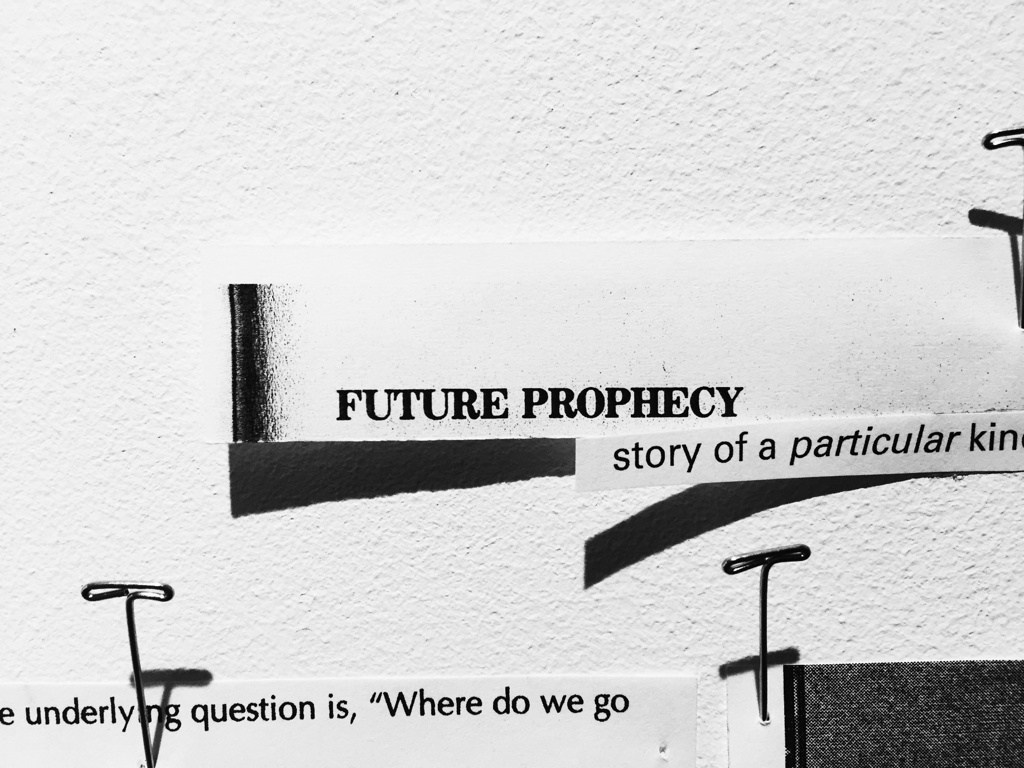 Featured in On Refusal, 2016.
By Kameelah Janan Rasheed
Featured in On Refusal, 2016.
By Kameelah Janan Rasheed
“I did not become Muslim, or black, or a woman, etc. and thus vulnerable to state violence on November 9th; I’ve always occupied these spaces. As such, I have no interest in centering Trump in the making of my work because he is the representation of a multi-century ecosystem of institutions, histories, and relationships that I have always addressed. In my practice, I explore the permutations of blackness and what poet Susan Howe calls the stutter, or the unmanageable bits of history that refuse convenient narrative arcs. I will be perpetually interested in how we read, write, consume, disseminate, and archive narratives of black folks. There are spaces for artists to create work that presents more liberatory futures or to interrogate the current conditions. I am growing more interested working to create art that asks necessary questions. The questions we ask dictate what futures we believe to be possible, and I want to continue working on the front of inquiry and pedagogical contexts that allow us to think beyond questions of impeachment or the next election cycle. My personal challenge in this moment is historical rigor in my articulation of what is happening, nuance in my futurist imaginings of what can develop, as well as the intentional investment in radical listening and research. Everything is moving quickly, and with good reason, but there is also an ethics of slowing down that allows us to sustain ourselves for the long-game, the long strategic and liberatory game.”